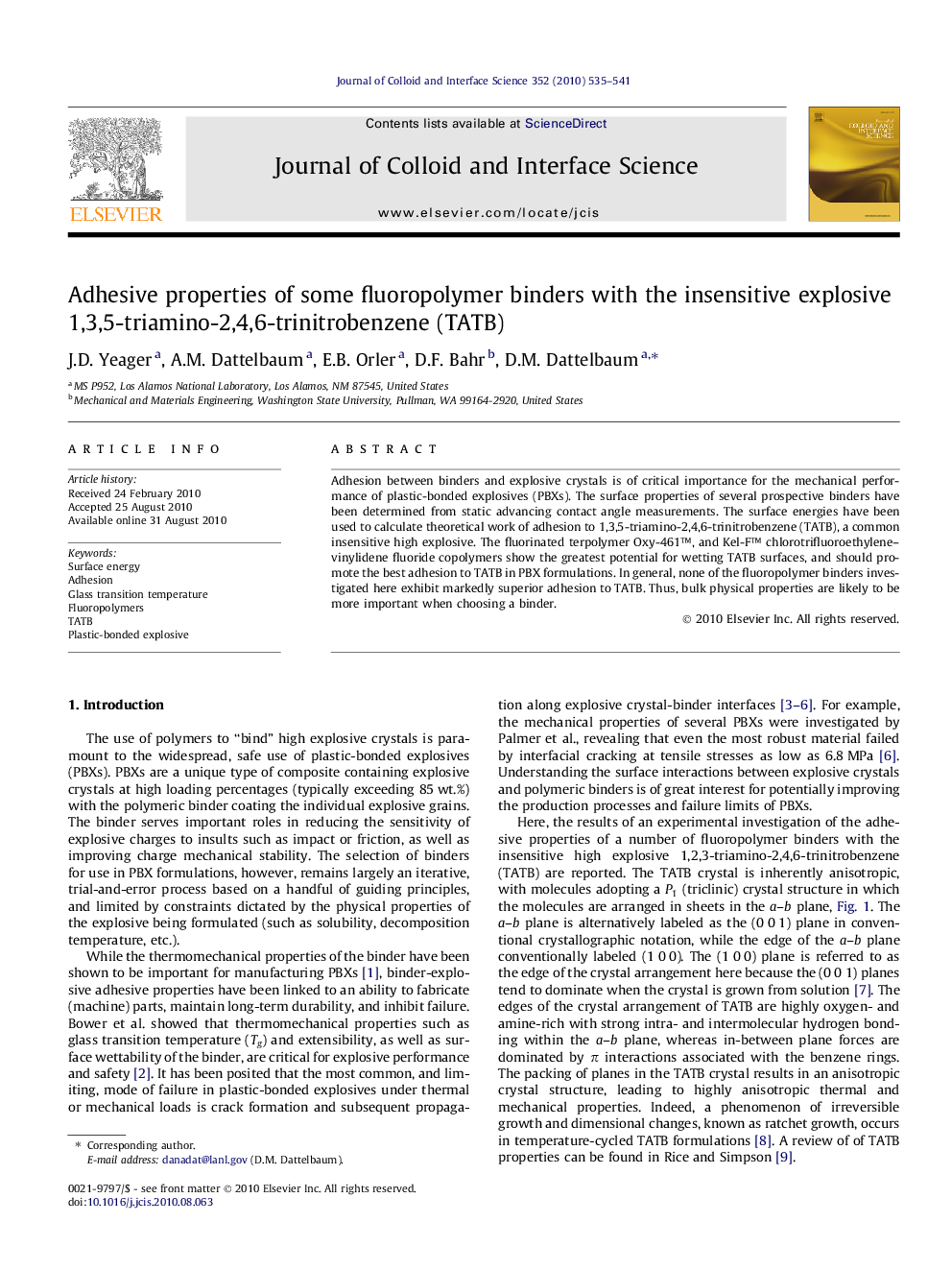| Article ID | Journal | Published Year | Pages | File Type |
|---|---|---|---|---|
| 609245 | Journal of Colloid and Interface Science | 2010 | 7 Pages |
Adhesion between binders and explosive crystals is of critical importance for the mechanical performance of plastic-bonded explosives (PBXs). The surface properties of several prospective binders have been determined from static advancing contact angle measurements. The surface energies have been used to calculate theoretical work of adhesion to 1,3,5-triamino-2,4,6-trinitrobenzene (TATB), a common insensitive high explosive. The fluorinated terpolymer Oxy-461™, and Kel-F™ chlorotrifluoroethylene–vinylidene fluoride copolymers show the greatest potential for wetting TATB surfaces, and should promote the best adhesion to TATB in PBX formulations. In general, none of the fluoropolymer binders investigated here exhibit markedly superior adhesion to TATB. Thus, bulk physical properties are likely to be more important when choosing a binder.
Graphical abstractTOC graphic: A typical deionized water droplet on Kel-F 3700 polymer film.Figure optionsDownload full-size imageDownload high-quality image (93 K)Download as PowerPoint slideResearch highlights► The surface properties of several prospective binders for use in plastic-bonded explosive formulations (PBXs) have been determined from static advancing contact angle measurements. ► The fluorinated terpolymer Oxy-461, and “Kel-F” chlorotrifluoroethylene–vinylidene fluoride copolymers show the greatest potential for wetting TATB explosive crystal surfaces, and should promote the best adhesion to TATB in PBX formulations. ► In general, none of the fluoropolymer binders investigated here exhibit markedly superior adhesion to TATB.
